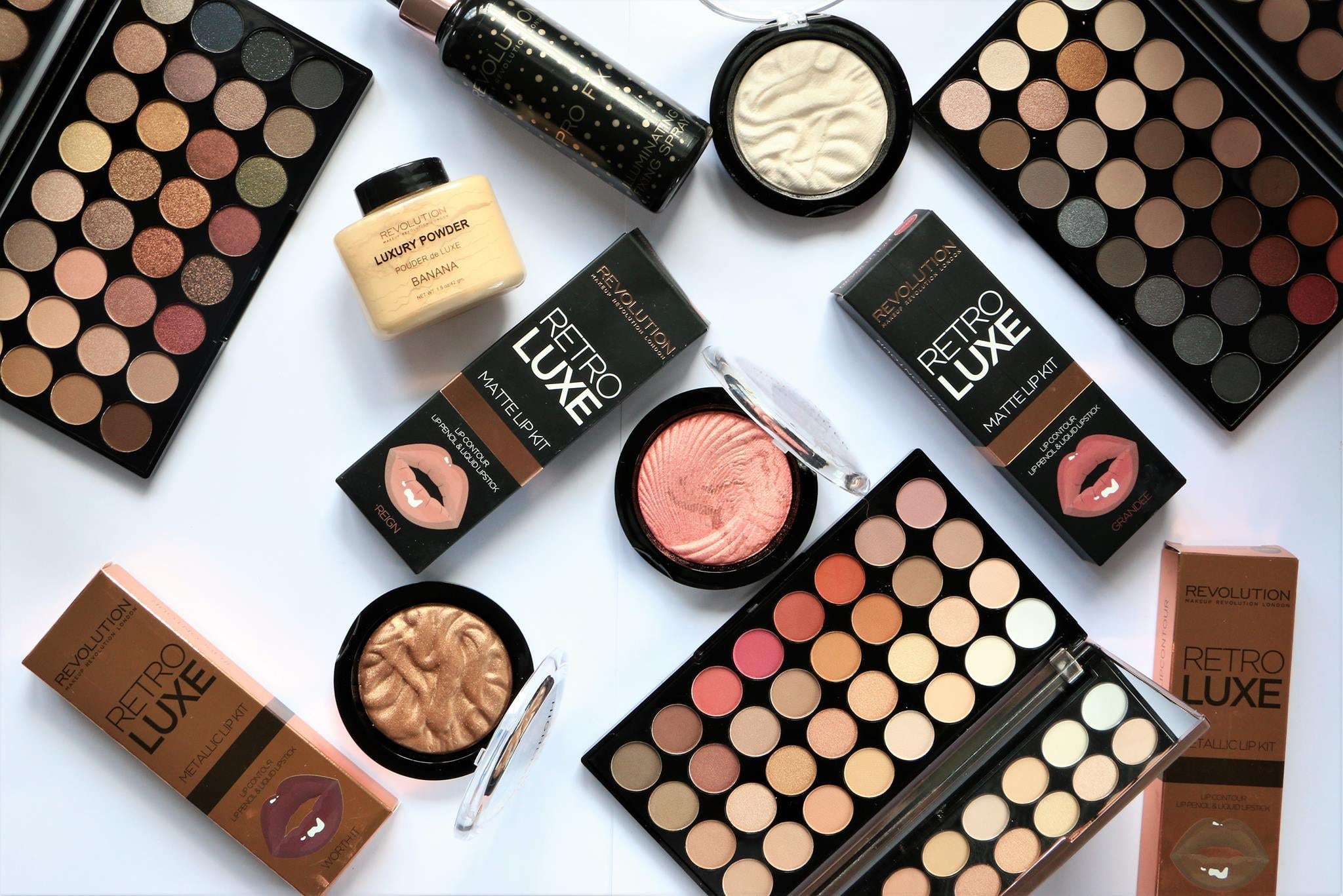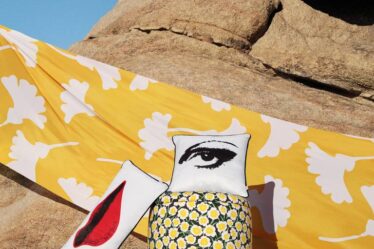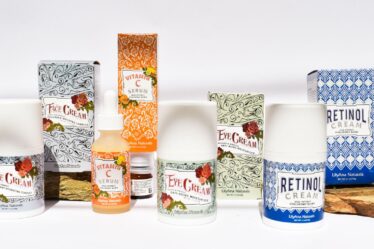
NEW YORK, United States — As well as being one of Superdrug’s biggest sellers and attracting hordes of fawning reviews from beauty vloggers, Makeup Revolution has received a thumbs up from Khloe Kardashian, who praised one of the brand’s $6 highlighters last year.
You might not see Superdrug’s products endorsed by Vogue, but it’s the influencers who have far more, well, influence these days. Once you’ve received the Kardashian kiss of approval, it’s pretty much a given that your brand is going to fly. Just look at makeup brand Ben Nye’s Banana Powder: once endorsed by Kim Kardashian, it became an overnight success. One of Makeup Revolution’s most recent launches is a Banana Powder dupe. The packaging looks almost identical to Ben Nye’s product, which costs $25 for a 3 oz. container. Makeup Revolution’s dupe costs $8.
Adam Minto, founder of Makeup Revolution (also known as MUR) and its parent company TAM Beauty, has said that he aims to make “quality makeup accessible to everyone.”
“Makeup should not be elitist,” Minto noted at a MUR press event in March 2016. “[It] shouldn’t be based on your ability or your willingness to pay more.”
Given that some designer foundations can set you back over $100, Minto has a point. The main point of contention with MUR though is that it gravitates towards packaging its products in a similar manner to bigger, longer-established, higher-priced brands. Most recently, two of MUR’s freshest launches have caused a particular fuss. Kat Von D publicly dubbed the brand “lazy f*cks” in an Instagram post, as she compared the appearance of her $48 “Shade & Light” eye contour palette with MUR’s $15 “Ultra” eye contour palette. “I don’t remember the tails being this heavy when I first got this coat,” she added.
Prior to Von D’s public outrage, Beauty by the Bunny blogger Angela Collinson published “Why I Won’t Be Duped — Have (sic) Makeup Revolution Gone Too Far?” in which she criticised TAM Beauty for its “blatant copying of other brands,” accusing the company of “flood[ing] the budget beauty market with their [sic] low quality copies, regardless of how good the product may or may not be.”
In Collinson’s direct firing line were MUR’s “Renaissance” lipsticks. With their luxurious-looking rose gold hue and ribbed casing, they do, as the blogger claims, look a lot like Charlotte Tilbury‘s now-iconic lipsticks. The greatest blow is served in the fact that MUR’s lipsticks cost $6.50, in comparison to Tilbury’s $34. “[Tilbury’s] lipsticks are such high quality and there is no way that the cheap dupes can even come close … Mr. Minto knows that,” Collinson wrote, adding that Minto’s practices are “dishonest and wrong and I really hope that Charlotte Tilbury takes action against him.”
I reached out to Minto for comment and, while telling me apologetically that he wasn’t keen to comment on the situation with Charlotte Tilbury or Kat Von D, he said of his brand: “Revolution is the recognised leader in fast beauty. We bring new trends and formulation, fast, to the consumer who seeks amazing quality at an affordable and accessible price point.”
When I asked makeup fans for their opinions on MUR’s “duping” of pricier brands, the responses were mixed. Many, like Emma, 19, can attest to the products’ quality, and aren’t fussed about copycat packaging: “I like MUR simply because I’m poor,” she said. “They have great colour dupes and the quality is amazing considering the price.”
Others said that they aren’t keen on MUR’s more “obvious” packaging dupes, but admit that their low price trumps all. “I get the moral issues with duping, but I also get that my pocketbook and my children mean I need to look for alternatives to high-end palettes,” said Anya, 26.“The only way I came close to [Too Faced’s] Chocolate Bar collections was through [MUR’s] I Heart Chocolate range.”
Others were less kind. “It’s like stealing; they’re profiting off someone else’s ideas,” said Shana, 23.
One person I spoke to questioned the legality of duping: “Brands like Sleek and NYX have cheap, good-quality products that aren’t dupes,” said 24-year-old Charlie. “It’s MUR’s packaging that’s the problem; some of it’s a blatant rip-off [of other brands’]. Why haven’t they been sued yet?”
Dupe brands trick the consumer because all of the expectations we have of product performance, we transfer into the [dupe] product.
And it’s not just consumers who are concerned about MUR’s duping strategy. John Noble, director of the British Brands Group, has been campaigning against copycat packaging — or what the BBG dubs “parasitic packaging” — since 1994, so has plenty to say on the matter. “A product should stand on its own merit, not masquerade as something else,” he explained to me. “Dupe brands copy the signals we associate with a familiar brand. This tricks the consumer because all of the expectations we have of product performance, we transfer into the [dupe] product.”
But how far can brands like MUR go with their copycat practices until they land in legal hot water? Noble concedes that it’s a grey area, as savvy brands “can easily find loopholes within the regulations for IP and trademark rights — they know what they have to avoid so they’re not infringing anything.”
Digging deeper into intellectual property law, the vagaries, even to the legally untrained eye, quickly become apparent, so I spoke to specialist IP lawyers Birgit Clark and Sabrina Tozzi, from Baker Mckenzie, who explained that trade mark registrations are reserved for distinctive “signs” that designate “trade origin.”
“In the absence of convincing evidence of ‘acquired distinctiveness’ of these signs in the consumer’s eyes, it’s very difficult to obtain trade mark protection for colours or shapes,” said Clark. “The legal rationale is that consumers are not in the habit of making assumptions about the trade origin of goods based on their colour or their colour of packaging, unless the colour is combined with a graphic or word element.”
Because of this, it’s difficult for Charlotte Tilbury — or any other brand — to register a trademark for a particular lipstick bullet design or shade. “There may be other types of intellectual property right at play,” Tozzi added, “but the cost and time involved in trying to enforce those rights, when the infringement is not clear-cut, may mean high-end brands are reluctant to take action against lookalikes.”
The copying of higher-priced brands is widespread — you’ll see it on the shelves in discount supermarket Aldi as frequently as you will on drugstore beauty stands. And then, of course, there’s fashion’s drawn-out, unclear relationship with copyright. The irrepressible rise of fast fashion means that companies like Zara have become notorious for producing cheap designer knockoffs. Julie Zerbo, the brains behind The Fashion Law, has made a name for herself by calling out high-street brands for ripping off runway looks. So, in this sense, what Minto is doing with TAM Beauty is nothing new.
MUR is far from alone in mimicking other brands. A quick Google search unmasks other offenders — budget brands W7 and Technic appear particularly fond of duping Benefit Cosmetics’s packaging, for example — and even popular drugstore brands have been accused of stealing ideas from the luxury beauty sector in the past, with a notable example being Maybelline’s Fit Me Concealer, which is packaged similarly to NARS’s Radiant Creamy Concealer.
Cosmetics are a booming business, and brands without huge advertising budgets can find success through social media and influencer marketing. We’re all wising up to the fact that you don’t need to break the bank to look good. 10 years ago, the words “budget beauty” would cause any self-respecting make-up lover’s heckles to rise, conjuring up mental images of gloopy lip-glosses, clumpy mascaras, and base products in limited, unrealistic shades. While the latter hasn’t improved — most drugstore brands still offer a paltry range of foundation shades, biased towards Caucasian skins — much else, quality-wise, has.
Brand snobbery, however, still exists. If MUR’s products weren’t as cheap, would they come under fire so frequently? In his TED talk “The Origins of Pleasure,” psychologist Paul Bloom touches upon the fact that we take the origin of products so seriously because we are “snobs … so focused on status. If you want to show off how rich you are, how powerful you are, it’s always better to own an original than a forgery.”
Arguably, the same principles can be applied to the way we react to beauty brands, especially as for many of us purchasing designer cosmetics is the closest we’ll come to being luxury-brand consumers. Which would you be keener to put on Instagram: a photo of your new Charlotte Tilbury lipstick, or your new MUR one? As someone whose makeup-related posts on Instagram feature luxury brands almost exclusively, I know which option I’d pick.
Grace Howard is a final-year English & Linguistics student and freelance journalist specialising in the fashion and beauty business.
The views expressed in Op-Ed pieces are those of the author and do not necessarily reflect the views of The Business of Fashion.



